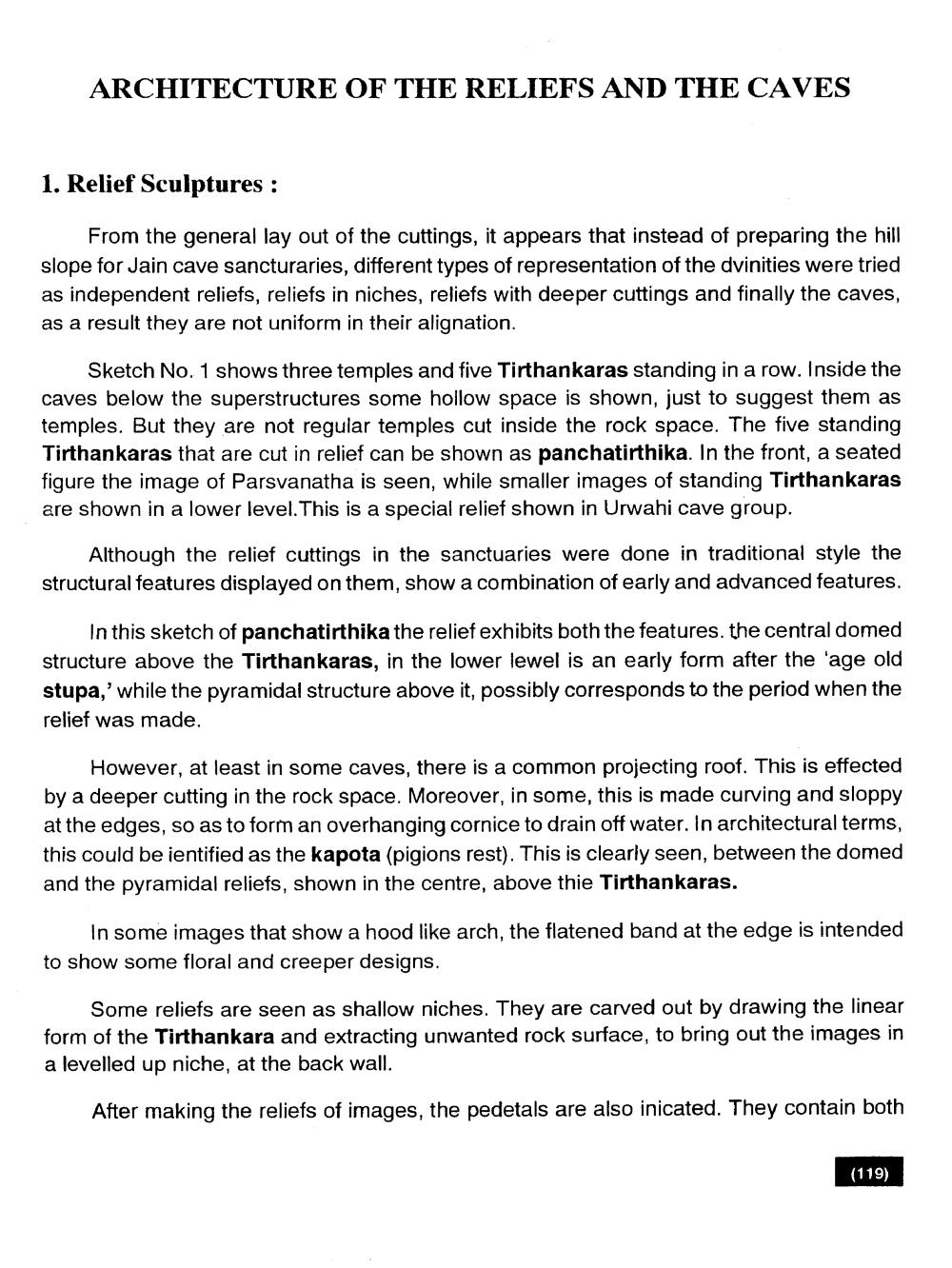________________
ARCHITECTURE OF THE RELIEFS AND THE CAVES
1. Relief Sculptures :
From the general lay out of the cuttings, it appears that instead of preparing the hill slope for Jain cave sancturaries, different types of representation of the dvinities were tried as independent reliefs, reliefs in niches, reliefs with deeper cuttings and finally the caves, as a result they are not uniform in their alignation.
Sketch No. 1 shows three temples and five Tirthankaras standing in a row. Inside the caves below the superstructures some hollow space is shown, just to suggest them as temples. But they are not regular temples cut inside the rock space. The five standing Tirthankaras that are cut in relief can be shown as panchatirthika. In the front, a seated figure the image of Parsvanatha is seen, while smaller images of standing Tirthankaras are shown in a lower level. This is a special relief shown in Urwahi cave group.
Although the relief cuttings in the sanctuaries were done in traditional style the structural features displayed on them, show a combination of early and advanced features.
In this sketch of panchatirthika the relief exhibits both the features, the central domed structure above the Tirthankaras, in the lower lewel is an early form after the 'age old stupa,' while the pyramidal structure above it, possibly corresponds to the period when the relief was made.
However, at least in some caves, there is a common projecting roof. This is effected by a deeper cutting in the rock space. Moreover, in some, this is made curving and sloppy at the edges, so as to form an overhanging cornice to drain off water. In architectural terms, this could be ientified as the kapota (pigions rest). This is clearly seen, between the domed and the pyramidal reliefs, shown in the centre, above thie Tirthankaras.
In some images that show a hood like arch, the flatened band at the edge is intended to show some floral and creeper designs.
Some reliefs are seen as shallow niches. They are carved out by drawing the linear form of the Tirthankara and extracting unwanted rock surface, to bring out the images in a levelled up niche, at the back wall.
After making the reliefs of images, the pedetals are also inicated. They contain both
(119)




